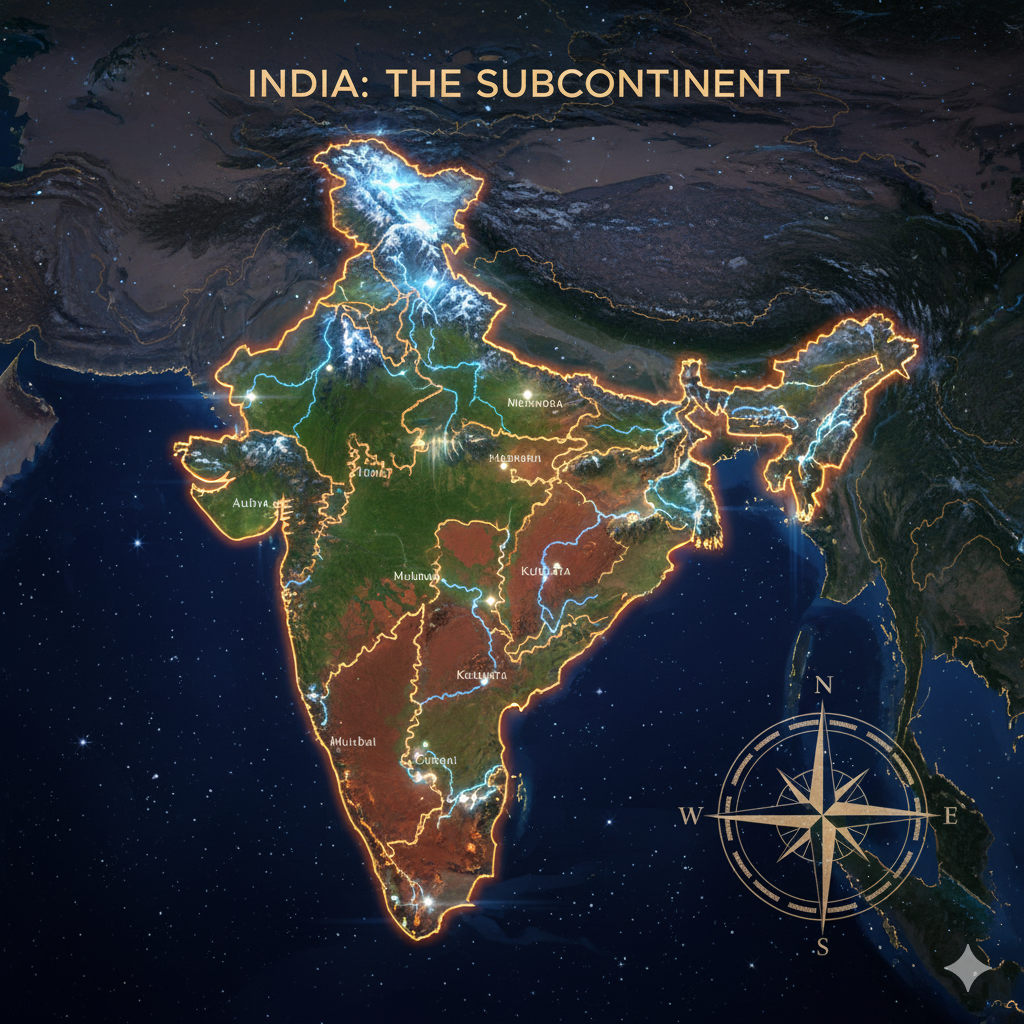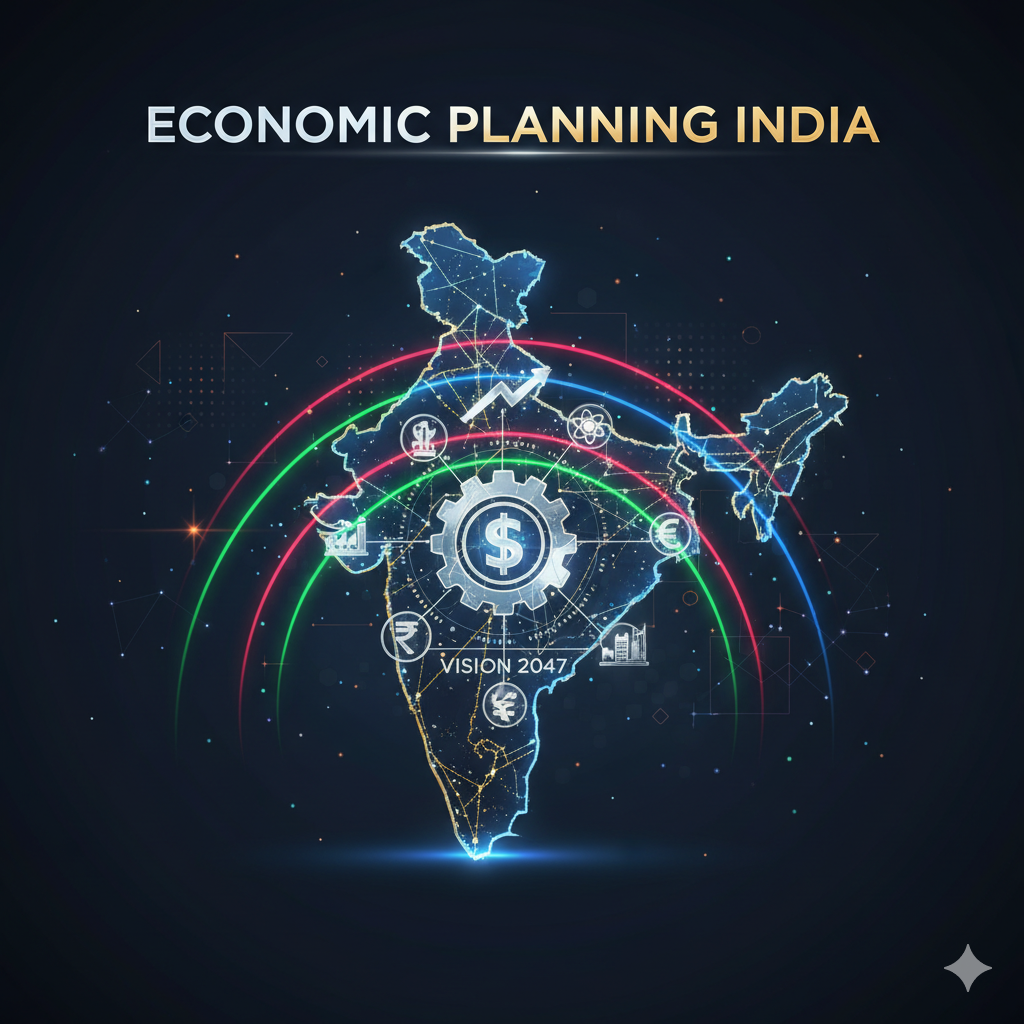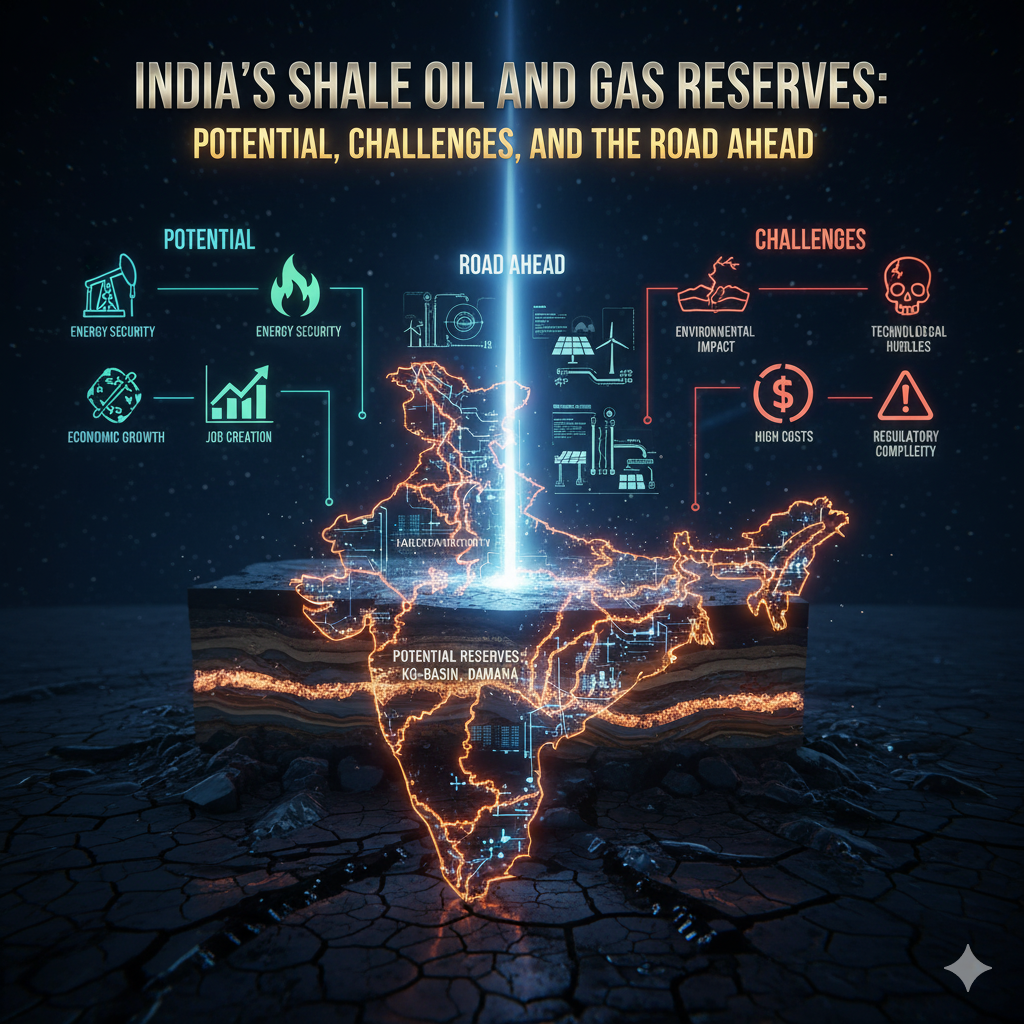Introduction
India, located in South Asia, is often referred to as a subcontinent. This classification is not merely geographic but also encompasses historical, cultural, geological, and climatic perspectives. The term “subcontinent” signifies a large, distinct landmass that is smaller than a continent but possesses features that distinguish it from the surrounding regions. India’s unique physical features, diverse climate, rich biodiversity, and historical importance justify this designation. This article explores the various reasons why India is considered a subcontinent, supported by geographic, geological, and cultural insights.
1. Geographic Significance
a) Distinct Landmass
India occupies a significant portion of South Asia, covering approximately 3.28 million square kilometers. It is separated from the rest of Asia by formidable natural barriers:
- Himalayas: These high mountains act as a natural northern boundary, separating India from Tibet and Central Asia.
- Indo-Gangetic Plains: While providing connectivity to neighboring countries, these plains are contained by surrounding mountain ranges, forming a natural corridor within India.
- Thar Desert and Aravalli Hills: These act as barriers in the northwest, separating India from the rest of the Asian landmass.
b) Peninsular Formation
The Indian Peninsula is triangular in shape, tapering southwards into the Indian Ocean. It is bounded by:
- The Arabian Sea on the west,
- The Bay of Bengal on the east, and
- The Indian Ocean on the south.
This distinct shape and isolation from the northern continental landmass reinforce India’s identity as a separate subcontinent.
c) Latitude and Longitude
India extends between 8°4’ N to 37°6’ N latitude and 68°7’ E to 97°25’ E longitude. This wide latitudinal spread allows for climatic and ecological diversity, a feature typical of subcontinents.
2. Geological Factors
a) Indian Plate
India sits on its own tectonic plate, the Indian Plate, which separated from the ancient supercontinent Gondwana about 120 million years ago. Over millions of years, this plate drifted northwards, colliding with the Eurasian Plate to form the Himalayas.
Significance:
- The independent movement of the Indian Plate distinguishes it geologically from the rest of Asia.
- India’s unique geological history, including the Deccan Traps and Himalayan formation, gives it distinctive topographical features.
b) Physiographic Divisions
India has several physiographic divisions, each with unique features:
- Himalayan Mountains – Young fold mountains formed by tectonic activity.
- Northern Plains (Indo-Gangetic Plains) – Fertile alluvial plains supporting agriculture.
- Peninsular Plateau – Ancient crystalline rocks, rich in minerals.
- Coastal Plains – Narrow strips along Arabian Sea and Bay of Bengal.
- Deserts (Thar Desert) – Arid zones in the northwest.
- Islands – Andaman & Nicobar and Lakshadweep islands in the Indian Ocean.
This diversity of landforms within one landmass is characteristic of a subcontinent.
3. Climatic Diversity
India exhibits multiple climatic zones due to its vast size and geographic location:
- Tropical Wet – Western Ghats, northeastern India.
- Tropical Dry – Central India and Deccan Plateau.
- Subtropical Humid – Indo-Gangetic Plains.
- Mountain Climate – Himalayan regions, including cold deserts like Ladakh.
- Arid Climate – Thar Desert.
The climatic variation supports diverse ecosystems, from tropical rainforests to alpine vegetation, highlighting India’s distinct environmental identity.
4. Cultural and Historical Factors
a) Cradle of Civilization
India is home to one of the world’s oldest civilizations – the Indus Valley Civilization. Its continuous cultural evolution, including the Vedic period, Maurya and Gupta empires, Mughal period, and modern history, reflects a self-contained cultural region distinct from its neighbors.
b) Linguistic and Religious Diversity
- Languages: India has 22 officially recognized languages and over 1,600 dialects.
- Religions: Hinduism, Buddhism, Jainism, and Sikhism originated in India, while Islam and Christianity have deep historical roots.
This cultural and religious diversity within a single geographic entity is another reason India is seen as a subcontinent.
5. Economic and Demographic Significance
- Population: India is the second-most populous country in the world, hosting over 1.4 billion people (2025 estimates).
- Agriculture: Fertile plains like the Indo-Gangetic belt make India an agricultural hub.
- Mineral Resources: India has rich deposits of coal, iron, bauxite, and rare earth elements.
The economic self-sufficiency and population concentration within a defined geographic region reinforce India’s identity as a subcontinent.
6. Strategic Importance
a) Natural Barriers
The Himalayas in the north, the deserts in the west, and seas in the south and east protect India from direct invasions, giving it a distinct geopolitical identity.
b) Connectivity and Isolation
India’s landmass is connected to Asia through narrow passes like the Khyber Pass, but its overall isolation due to mountains and seas ensures it develops as a distinct region – a characteristic of a subcontinent.
c) Maritime Significance
The peninsular shape and proximity to major sea routes make India strategically important for trade and defense. Its subcontinental status is also recognized in international maritime policies.
7. Biodiversity and Ecological Significance
India is one of the 17 megadiverse countries in the world. Its ecosystems include:
- Tropical rainforests of the Western Ghats and northeastern India
- Himalayan alpine forests
- Mangroves of the Sundarbans
- Deserts of Rajasthan
- Coastal and marine ecosystems
This ecological richness, within a single geographic region, highlights the environmental distinctiveness of India as a subcontinent.
8. Comparison with Continents
While smaller than a continent like Asia or Africa, India has the following features that justify its subcontinent status:
- Sizeable landmass – comparable to a small continent.
- Distinct geological and tectonic features – separate tectonic plate.
- Diverse climate and ecosystems – tropical to alpine climates.
- Cultural and historical uniqueness – civilizations and traditions distinct from neighboring regions.
9. Conclusion
India’s designation as a subcontinent is justified by a combination of physical, geological, climatic, cultural, and ecological factors. Its distinct landmass, bounded by natural barriers, tectonic independence, diverse climate, rich biodiversity, and unique cultural and historical heritage distinguish it from the rest of Asia. Understanding India as a subcontinent provides insight into its environmental diversity, socio-economic significance, and strategic importance.
In summary, India is not just a country; it is a unique landmass with distinct geographic, ecological, and cultural characteristics, making it truly a subcontinent.




